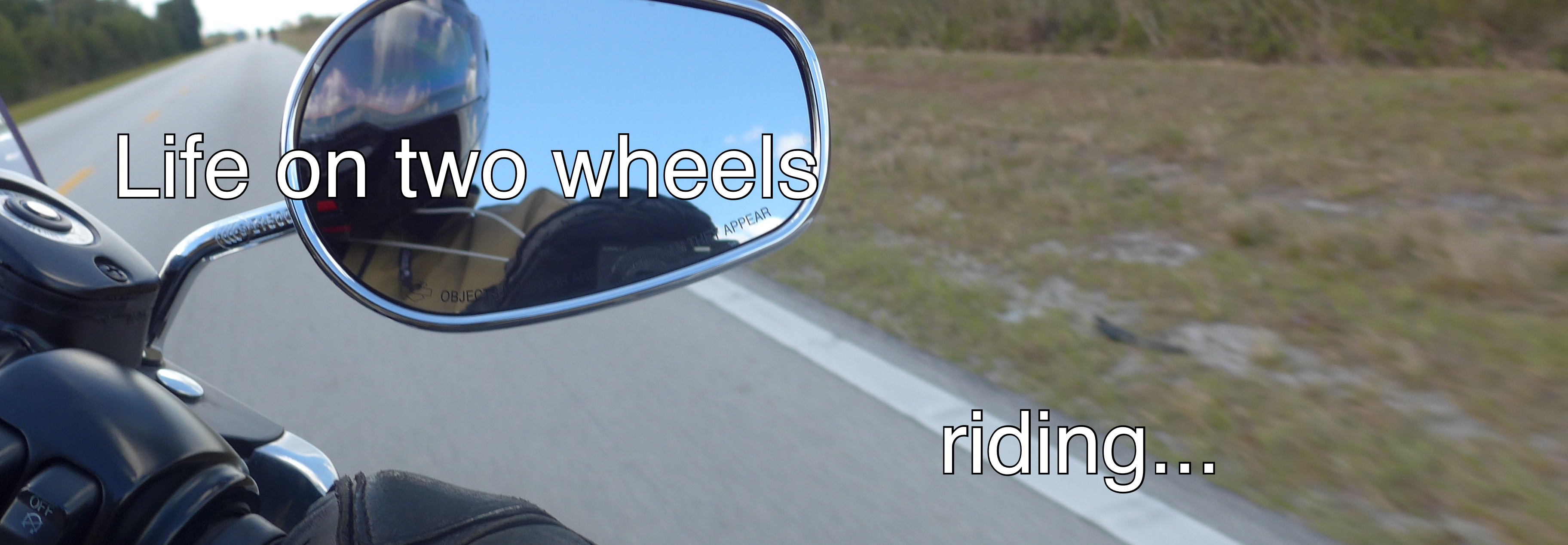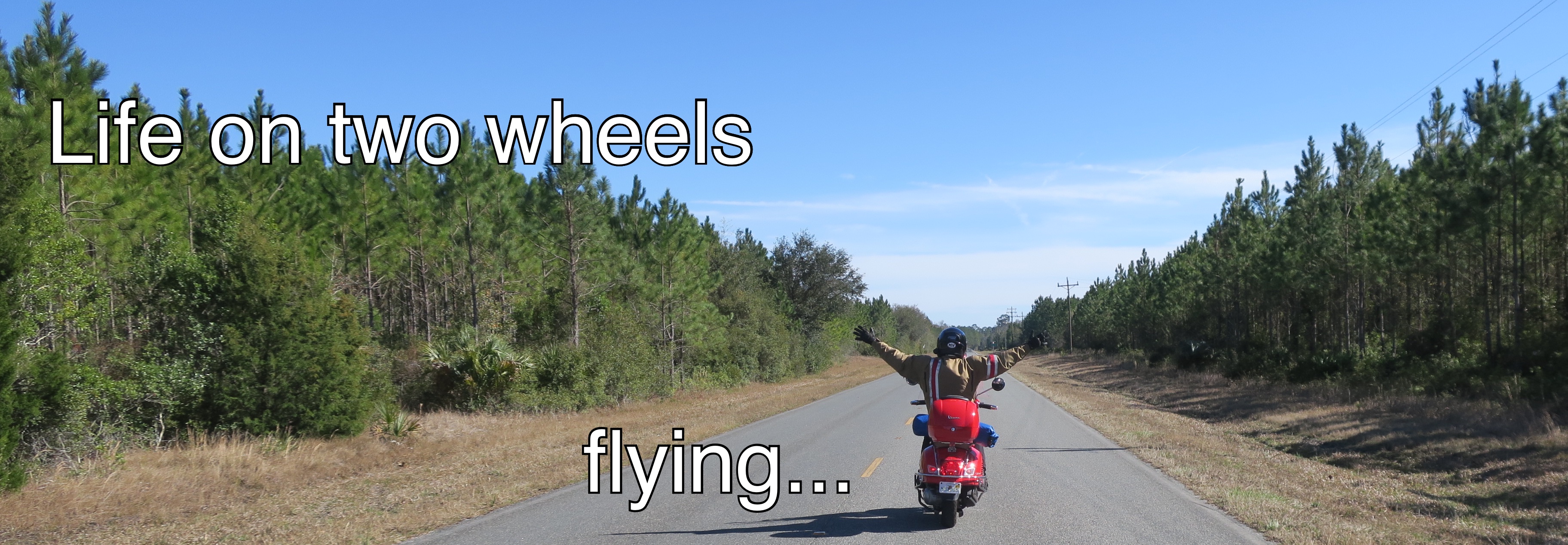Making sure your tires are in good shape is important.
A visual inspection, particularly of the rear tire on a Vespa (or any other scooter for that matter), is essential. Paying particular attention to the rear tire is important because it wears about three times faster than the front tire. A visual is good, but it's not enough.
Low tire pressure is a very bad thing.
If your tires are only a few pounds shy of the recommended pressure, you will be sacrificing 5 or 6 miles per hour at full throttle.
On city streets you might not be fussed about it, but if you take expressways and usually ride at the top end of your bike's ability, those 5 or six miles per hour will be sorely missed.
If your bike is slower, it's because under-inflated tires have so much more rolling resistance. Even on city streets that means that fuel consumption is way up. With a Vespa, a full tank at current prices in Canada costs seven to ten dollars, no big deal. But it does mean more annoying trips to the pumps that could be avoided.
If the tire pressure gets really low, the usual sure-footed behaviour of the scooter becomes downright squirrely.
I have felt what that's like because last year I was plagued for a while with a slow leak. Any seams in the road make the bike squirm in a queasy way.
All of which to say that proper tire pressure is a must.
There are a few quirks of scooters that make keeping an eye on tire pressure a pain.
First off, unlike a car where a walk-around visual inspection will allow you to spot a low tire, the tires of a bike at rest, particularly a scooter, will always look fine, even if all the air has escaped. If the tire is actually flat, you're more likely to feel it in the saddle. I don't actually know this for a fact, I've never really had the experience, thank heavens.
If the tires are low enough to cause queasy handling you won't be able to tell sitting on the saddle at rest. The tires might seem too low on a visual inspection with a rider on the saddle, but when you're the rider on the saddle, you can't see the wheels, let alone the profile of the tires.
This means that regularly using a gauge to determine the pressure is critical. You shouldn't ride a powered two-wheeler if you don't carry a pressure gauge all the time.
That leads to another point.
Getting to the rear tire valve stem on a Vespa is a T-O-T-A-L P-A-I-N!
Reading the pressure is only mildly difficult. Topping up the tire is enough to coax the Pope to swear.
Why? If you're asking, it's because you have never done it.
The rear valve stem is most accessible with the valve at the 6 o'clock position.
The Vespa's muffler is like a blimp that prevents seeing and touching the valve stem simultaneously. You can see it, if you get down on your knees and rest your forehead on the ground. But when you reach for the valve stem with your hand, unless you've got a black belt in Yoga, it's just damn near impossible to see what you're doing.
Let's say that you've persevered, and gotten the stem cap off, and read the pressure, and you need to add five pounds.
If you're really unlucky, you've found this out after riding to the gas station.
Adding immensely to the fun you're having, is the undeniable fact that the damned muffler is as hot as your toaster-oven halfway through the morning toast order.
I guarantee that if you try to top up the air, you will probably succeed, but not before the tire rotates in one direction or the other (two or three times), the air hose falls off the stem (two or three times), you fumble trying to seat the air hose (two or three times), end up releasing more air (two or three times), and before finally getting air into the tire, you've burnt your knuckles on the muffler (two or three times).
Now you know why many Vespa owners ride with less air than they should. Which brings me to the point of this post, along with some really good news.
Yes Virginia, that are some tools and tricks that make it all much easier.
- If you can afford it, get a compressor.
- If you don't have a compressor and must ride to a gas station, wear your gloves to top up the rear tire to ward off muffler burns.
- Get a Griplock for your Vespa. Not only will it help keep your Vespa safe, you can apply it to the rear brake lever once the wheel is at the six o'clock position and it will keep it there. If you're not sure what a Griplock is, check out this post.
- If you aren't getting a Griplock, take along a Velcro cable wrap thingy and use it to hold the rear brake lever compressed.
- Go to your local Walmart and pick up this dandy tool:
Simple genius. Almost painless.
And so it would have been for me one morning last week. However when I was topping up my tires I spotted two more stone chips, and the one one the right is a doozy!
Consider this graphic evidence that riding ATGATT on every commute is a wise choice. If a kicked-up stone can gouge a metal cowl, do you need to have that stone tear a strip off your calf in rush hour traffic?
How distracting would that be?










3 comments:
Thanks for the post. Nice pics!
I check my tires every morning before I leave work and do a visual check before I leave work. I am paranoid when it comes to tire pressure. And with my recent experience I also know how it feels to to maneuver a Vespa with a flat front tire.
Sonja, in a perfect world I would be filthy rich, have many bikes to choose from, and resident mechanics to keep them all top-notch.
Post a Comment